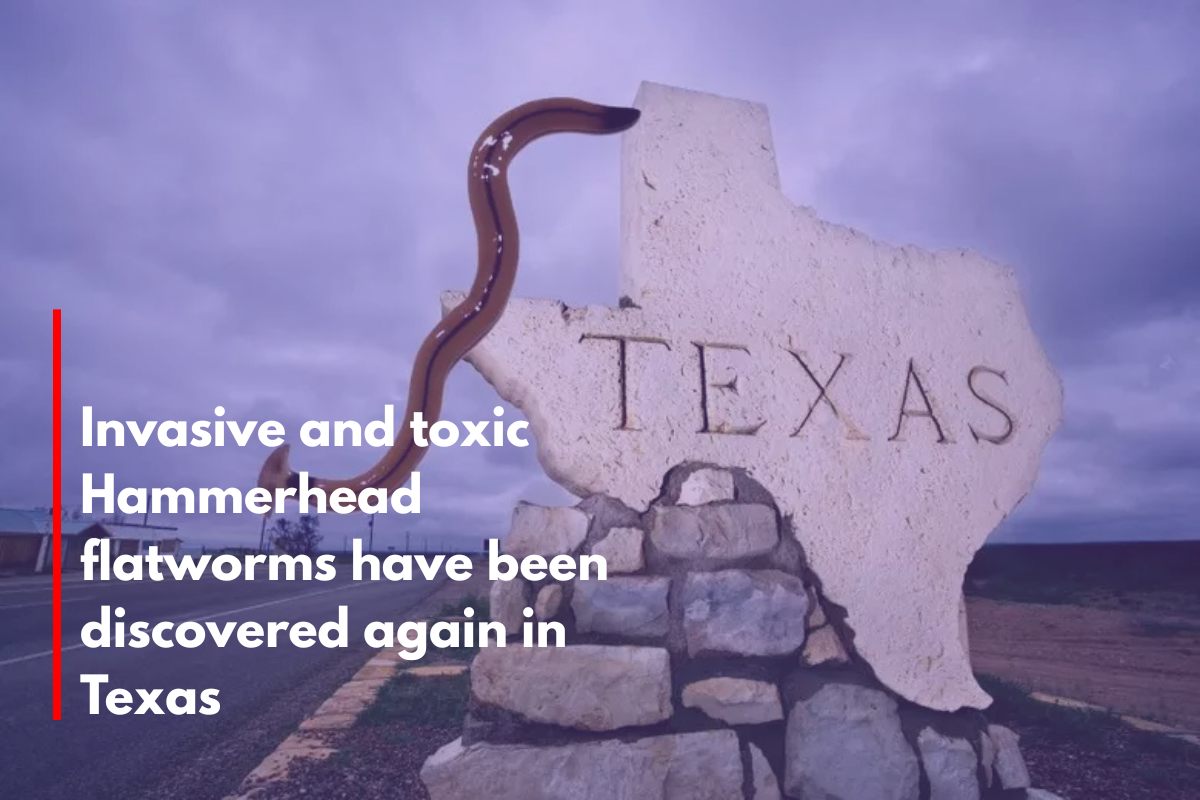Texas has seen an increase in reports of invasive species this spring and early summer, thanks to the heavy rainfall in many parts of the state. One such species that has made a return is the hammerhead flatworm, and it’s causing concern among residents. Let’s dive into what this creature is, why it’s a problem, and how to deal with it.
What is the Hammerhead Flatworm?
The hammerhead flatworm, also called the hammerhead slug, is an invasive species that thrives in areas with heavy rainfall. These flatworms can often be found on driveways, patios, and sidewalks after wet weather. They can grow as long as one foot and have a distinct, wide “hammer-shaped” head, which is how they got their name.
These flatworms are not new to Texas. Last year, they were spotted in East Texas, Central Texas, South Texas, and the Dallas-Fort Worth area. Now, reports show that they have returned to Central Texas, making their presence known once again.
Are Hammerhead Flatworms Dangerous in Texas?
While hammerhead flatworms are not typically dangerous to humans, they are still a cause for concern. According to Fox26Houston, these worms can secrete a toxic substance from their skin, which can cause skin irritation. Additionally, the flatworms carry parasites that can be harmful to humans if touched.
Another serious risk is to pets. The flatworms have been known to kill pets when they are consumed. This is especially true if the pet eats a large number of the worms. For this reason, it is important to keep pets away from these creatures.
If you do encounter a hammerhead flatworm, the Houston Chronicle advises using gloves, paper towels, or a stick to handle them. Afterward, make sure to wash your hands thoroughly. KVUE suggests that vinegar and salt can be used to kill the worms if you need to get rid of them.
What Do Hammerhead Flatworms Eat?
These flatworms are predatory, and they feast on earthworms, snails, slugs, and sometimes even insects. This is a concern for local ecosystems, as earthworms play an important role in soil health. The return of the hammerhead flatworm could disrupt the balance of natural pest control in the region.
How to Handle Hammerhead Flatworms Safely
If you come across a hammerhead flatworm in your yard or on your property, it’s important to handle it safely. Here are some steps to take:
Wear gloves when touching the flatworm.
Use a stick or paper towel to pick up the worm if you must move it.
Dispose of the worm safely by killing it with vinegar and salt, or by putting it in a sealed bag and throwing it away.
Wash your hands immediately after handling the worm, even if you used gloves.











Leave a Reply